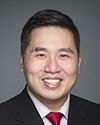Yes, I certainly can, if you'll just allow me to go to my notes here.
We have a number of significant pieces, not only in the programs for indigenous youth that General Lanthier was talking about, but we have different places, for example, a number of websites that portray young women who are going through basic training, so they can be followed and seen. We can tell the following-up and everything else. There are approximately 16,000 people who are following these two young women going through training. It helps to demystify what the training looks like.
We also have something called Operation Resurrection. We use the term to go after those files where people have gone quiet. When a young Canadian starts to apply, if they all of a sudden stop the application process, our recruiters actively try to get them back. We get a return rate for reviving the file, if you will, of approximately 30%.
We also have a number of advertising campaigns that are done at various detachments. In St. John's, for example, we are joining up with the College of the North Atlantic, Bonavista campus, for orientations in trade technologies. Specifically, we are trying to encourage those graduates, especially the women graduating from those programs, to join the Canadian Armed Forces.
We're doing this as well in Fredericton, career exploration in trades and technology for women. It is a forum that's being held. We go and actually sponsor the forum, to make sure women can come and see that they can be part of trades and technologies in the Canadian Armed Forces.
Clear across Canada, all of our detachments or recruiting centres undertake to do presence and to do these kinds of engagements, to make sure that we can excite Canadians to come and be part of the Canadian Armed Forces.




